PHYSIOTHERAPY MANAGEMENT ON DE QUERVAIN SYNDROME
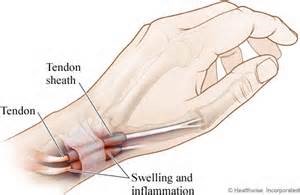
Source: www.webmd.com
What is De Quervain Syndrome?
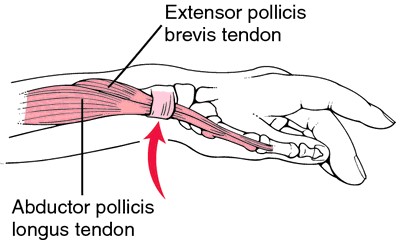
Source:www.lookfordignosis.com
De Quervain Syndrome is a common condition ‘involving tendons around the base of the thumb. These tendons include the extensor pollicis brevis and the abductor pollicis longus tendon. The tendons are encased in a “sheath” or a tunnel at the wrist. De Quervain Syndrome can occur gradually or suddenly when the tendon become inflamed or thickened from repetitive use or overload, and have difficulty sliding through the extensor tunnel. Swelling of the tendon, and tendon sheath, can cause pain and tenderness along the base of the thumb. This is obviously visible when making a fist, gripping something or when turning the wrist.
What causes De Quervain Syndrome?
- De Quervain Syndrome may be caused by overuse.
- It occurs most commonly in middle-aged women.
- Any activities involving repetitive hand or wrist movement, such as gardening, playing golf or racket sports or lifting your baby could make the symptoms worse.
- Associated with pregnancy.
- Direct injury to your wrist or tendon; scar tissue can restrict movement of the tendons.
- Inflammatory arthritis, such as rheumatoid arthritis.
What are the symptoms of De Quervain Syndrome ?
- Pain, tenderness and swelling around the base of the thumb. Pain could radiate up the forearm.
- A “catching” or “snapping” sensation may be felt when moving the thumb.
- Difficulty flexing the thumb.
- Difficulty pinching or grasping with the thumb or hand.
- Pain when moving the wrist from side to side or twisting it.
- Experience limited motion and feeling of weakness in the thumb.
- Activities that involves pinching or grasping with the thumb make the symptoms worse, eg; writing, opening jars, lifting a child, hammering and sports.
- Numbness along the back of the index finger and thumb (as a result of the irritated nerve sitting on the tendon sheath)
How is it Diagnosed ?
Your physiotherapist will perform a Finkelstein test, which gently stretches the tendons on the thumb side of the wrist through the extensor tunnel. Pain during this test indicates a positive sign.
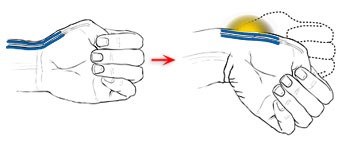
Finkelstein test
Source : http://www.physio-pedia.com/File:Finkel.png
Risk factor for developing De Quervain Syndrome include:
- Age of more than 40 years old.
- Chronic overuse of the hand.
- Female. The condition is more common in women.
- Pregnancy. The condition may be associated with pregnancy.
- Baby care. Lifting your child repeatedly involves using your thumbs.
- Active participation in sports that stresses the hand and wrist, such as golf and tennis.
Complication
Untreated De Quervain Syndrome might decreased function of your hand and wrist and restrict your wrist’s range of motion.
Physiotherapy Treatment
The physiotherapist will assess and evaluate your thumb and wrist to help you to relieve the pain, increase muscle flexibility, increase your muscle strength, and also help you to plan your gradual return to activity as the symptoms go away.
Treatment may comprise of :
-
- Ice treatment
- Electrotherapy (eg. Ultra sound)
- Exercises to improve strength and flexibility of the thumb and wrist
- Taping
- Education :
1. avoid repetitive thumb or wrist movements
2. avoid forceful hand movements that increase pain
3. avoid putting the wrist and hand in an awkward position while using the hand
or arm
Exercise for De Quervain Syndrome
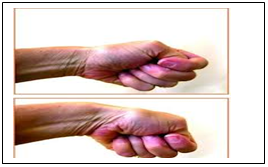
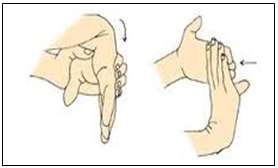
Thumb Stretch Wrist Stretch
Source : http://www.ipcphysicaltherapy.com/DeQuervainsTendinitis.aspx
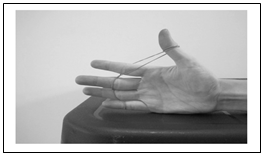
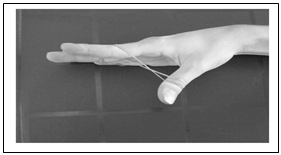
Eccentric thumb extension and thumb abduction exercises with elastic band
Source : http://www.ncbi.nlm.nih.gov/pmc/articles/PMC3364060/figure/f3-jcca-v56-2-112/
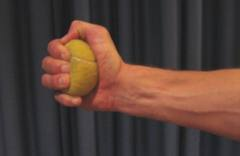
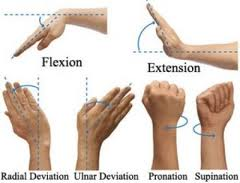
Thumb Strengthening Wrist Mobilising
Source : http://www.ipcphysicaltherapy.com/DeQuervainsTendinitis.aspx
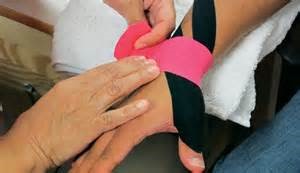
Taping Technique
Source :westchestemagazine.com
Conclusion
With appropriate physiotherapy management, early cases of De Quervain Syndrome usually recover within a few weeks, while chronic cases will take more than 6 months. Therefore, early intervention is crucial to speed up recovery. Surgery is rarely indicated unless you are not responding to conservative treatment
References
- Papa, J.A. 2012. Conservative management of De Quervain’s stenosing tenosynovitis: a case report. J Can Chiropr Assoc,.56(2): 112-120
- Retrieved 26 June 2015 www.moveforwardpt.com/SymptomsConditionsDetail.aspx
- Wheeless, Clifford. “De Quervain’s Disease.” Wheeless’ Textbook of Orthopaedics. 2012. Wheeless’ Textbook of Orthopaedics. 13 Jun. 2010. Duke Orthopaedics. 6 Oct. 2010 <www.wheelessonline.com/ortho/dequervains_disease>.
Source Image
- Retrieved 26 June 2015 http://www.ipcphysicaltherapy.com/DeQuervainsTendinitis.aspx
- Retrieved 26 June 2015 http://www.ncbi.nlm.nih.gov/pmc/articles/PMC3364060/figure/f3-jcca-v56-2-112/
- Retrieved 26 June 2015 http://www.physio-pedia.com/File:Finkel.png
- Retrieved 26 June 2015 westchestemagazine.com
- Retrieved 26. June 2015 http://www.webmd.com
- Retrieved 26 June 2015 http:// www.lookfordignosis.com
| Last Reviewed | : | 23 August 2019 |
| Writer / Translator | : | Se To Phui Lin |
| Accreditor | : | Daaljit Singh Harbachan Singh |
| Reviewer | : | Halimah bt. Hashim |







